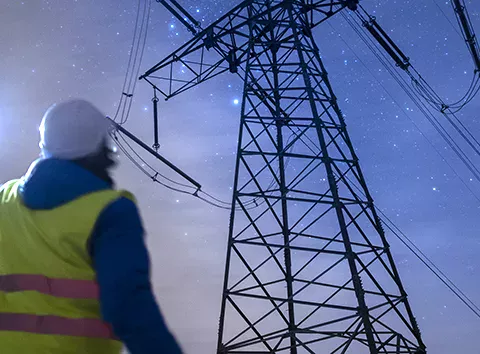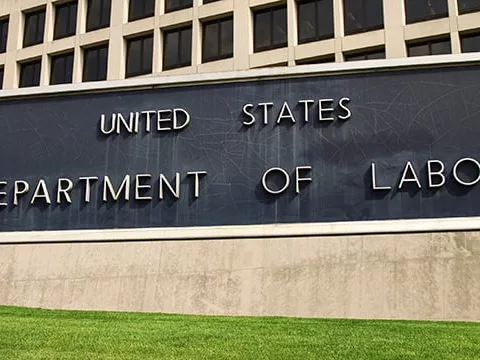The highway from Rabat to Casablanca runs parallel to the Atlantic coast, a couple of kilometres inland. It is a landscape of industry, warehouses, small settlements and agriculture; donkeys share the side roads with diesel trucks and mostly rickety cars. As one leaves Rabat, the highway goes past the suburb of Temara where, if you look closely , you will see a low-lying building, as nondescript as they get, except that it has 2,000 square metres of solar panels on the roof. Welcome to Med Glass Industrie, a client of our client Maghrebail, a leasing company owned by our strategic partner BMCE-Bank of Africa.
Glass is energy-intensive: its production requires melting sand with other components at the highest temperatures of any industrial process known to man. While there is no glass production in Morocco, Med Glass comes close: it imports glass panels, then heats them so they become ductile and can be bent or cut into a variety of shapes. This takes a lot of energy. It is where the solar panels come in, nicely reducing the client’s energy bill.
This is but one of a thousand examples of how our partner financial institutions help their clients embrace new technologies and adapt to a changing planet. But that example holds an important lesson: the energy supply and the production line have been adapted to one another. The most energy-hungry machine at Med Glass is managed through a smart system so that it works only when there is sufficient solar energy. This has led the client to modify their production chain, to ensure that the solar-powered machines do not create bottlenecks, and to only rely on the electricity grid when absolutely necessary: a new production model for new times.
As we look at how financial institutions adapt to a warming planet, we need to go through a similar journey, starting with the EBRD. It is no longer good enough to sign, disburse and implement green energy financing lines, something that we have been doing with remarkable persistence and drive over the past many years. It will not be enough. All the international financial institutions’ (IFIs’) money in the world will not be enough. The power of market forces is many times larger and is essential for this journey. Put simply, we need to make finance a driver of the planet’s greening. The next stage of our climate agenda (as laid out in the EBRD’s financial institutions strategy, which has just been submitted for public consultation) will include supporting and encouraging our partner banks on a vital journey of harnessing finance to green our planet:
- More green lending is required, such as the Green Economy Financing Facility (GEFF) in Morocco.
- We need to further develop climate risk assessment and climate governance. Financial institutions have to rethink how they decide, how they lend, how they measure risks and what projects they choose to finance. The risks from climate change are pervasive, from rising sea levels to extreme events, from the speed at which ski resorts will become obsolete to questions of financing for the building next door. Consider a property developer who needs financing for an office building that he intends to let. If he fails to account for rising temperatures, and the building does not function when the air outside is more than 42 degrees Celsius outside, in a few years this building will struggle to attract tenants. Therefore, the developer will be unable to pay back his loan and the bank will be in trouble. In short, the climate question now requires us to ask questions about everything we do.
- Lenders will need to measure the carbon footprint of clients.
- Banks will have to decide how to deal with “legacy” industries, whether to simply walk away and cease funding them or devise plans to accompany their transformation.
- Governance and disclosure need to change.
Are banks ready? Thanks to a survey that the EBRD undertook early in 2021, we know the answer. By and large, it is a resounding “no”. Climate risk management is still in its infancy. This is an area where we can and we will play a catalysing role. Working together with other IFIs, we are in the early stages of planning this effort.
This year’s survey also points to another important lesson: our clients tell us that their regulators’ decisions will drive their own. This is understandable: banking is a highly regulated industry (rightly so, given its role as the keeper of people’s money) so banks typically take their cue from their regulator.
Things are moving on that front. I remember sitting down for coffee with a central bank governor, at one of our annual meetings a few years ago, and discussing options that would encourage banks to develop lending to renewable energy projects. Banks were asking the regulator to allow them to put aside less capital for their renewable projects than for their fossil fuel financing. The governor was reluctant. First, renewable projects are not inherently less risky. Second, if he started adapting capital rules to political or social needs, this would create a potentially dangerous precedent, which could erode the quality of the country’s risk management framework and the independence of the central bank: two major risks to financial stability, which stands at the core of any central bank’s mandate.
Now, with the risk-based approach (the property example above comes from another central bank), climate is at the forefront. Already, many central banks in the EBRD regions have joined initiatives such as the NGFS (Network for Greening the Financial System), and more are on the way. Just as we are advising clients, we are also advising regulators.
Lastly, as an increasing share of our business is done via capital market transactions, and as we are looking to boost our distribution, we will intensify our efforts to sell more of our exposure to third party investors. There is nothing like the prospect of a successful fixed-income transaction to focus the mind.
We humans have a hard time connecting our behaviour with indirect consequences. We also have a hard time grasping long-term consequences. Short-term profits and pain we understand. This is why, when we speak of greening the financial sector, I always welcome broad approaches that rely on profits in addition to principles. Risk management is all about profits; so is the European Union’s carbon tax. The stars are aligning for ambitious change. We can make a difference.





